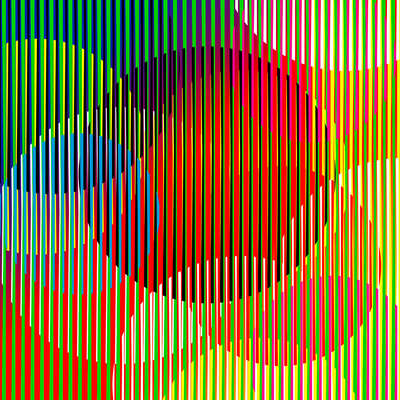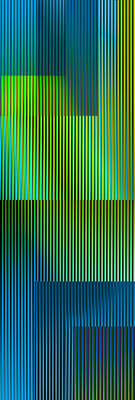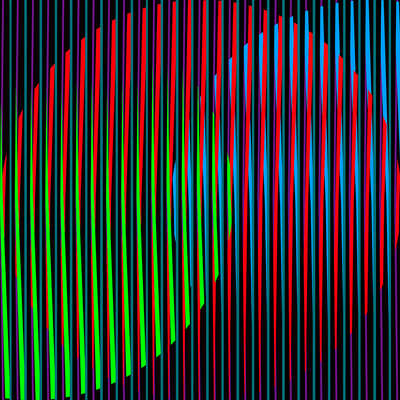The Venezuelan-Spanish artist’s roots are firmly grounded in painting. Over time, he transitioned toward digital art, drawing significant inspiration from Optical Art, also known as Op Art, where the aesthetics of movement and visual illusion became central to his creative approach. Despite his consistent and distinctive style, his artistic scope is remarkably broad: it spans painting, graphic design, photography, audiovisual media, printmaking, and light design. This interdisciplinary approach enables him to continuously explore new avenues of dynamism and transformation, all within the framework of the digital revolution and its accompanying innovations. Blas describes his art as a convergence between an analog past and a digital future.
He views light and color as the essence of visual art, intentionally placing them at the core of his work. A recurring motif in Blas’ creations is optical perception, which is enriched by the dynamic effects embedded within in his pieces. The interplay of light and color creates a sensation of perpetual motion for the viewer. Particularly in his multiphase editions based on lenticular technique, the illusionary touch expands to new dimensions: here, Op Art influences blend with dynamic elements, causing objects to shift and transform depending on the viewer’s angle. Simultaneously, the cut-outs possess an almost organic quality that, when paired with intricate patterns of color and line, generates a fascinating interplay.
Blas is influenced by graphic artists like M.C. Escher and prominent Op Art figures such as Victor Vasarely and Carlos Cruz-Diez, who also employed the moiré effect and colored lines to create optical illusions.
Pedro Blas’ works evoke a striking sense of movement and vibration. They explore new modes of perception in a modern world dominated by screens and artificial light. To bring this vision to life, he combines cutting-edge digital software with both analog and digital photography, replacing the traditional paintbrush to execute his artistic vision. In doing so, he combines his background in classical painting with contemporary innovations, creating an art form that seamlessly merges tradition and future in a fluid, distinctive dialogue.


















